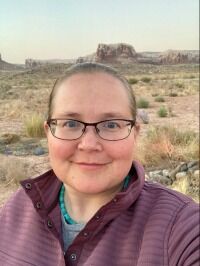Some information may be outdated.
At the ACLU of Utah, we believe in a simple truth.
We believe that people should select their representatives, and not the other way around.
Every ten years, Utah draws new voting maps for local, state, and Congressional districts based on fresh population data from the U.S. Census. And since Utah’s population grew by 507,731 people between 2010 and 2020, many of the state’s political boundaries will need to change. The process of drawing new district boundaries is often called redistricting, but we prefer the term “community mapping” because the districts redrawn this year will determine our community’s resources for the next decade.
Every vote and every community should matter. But last time the maps were drawn, certain state representatives carved up cities and neighborhoods in Grand County and across the state to protect their own power. This time around, the maps proposed by Utah lawmakers will face competition from the new Independent Redistricting Commission, created by the successful ballot initiative known as “Proposition 4” in 2018.
The goals of these two approaches could not be more different. The Independent Redistricting Commission is barred from looking at how many Republicans or Democrats live in a district and instead focuses on combining “communities of interest,” which include everything from where people live, work, and go to school, to the unique social and cultural ties that bind different communities together. In contrast, the Legislative Committee voted against taking communities of interest into consideration when drawing boundaries, but they can shape new maps based on where incumbent politicians live.
Utah’s last redistricting effort by lawmakers in 2011 resulted in some truly bizarre district boundaries. One infamous example is here in Moab, where a boundary line down the center of Main Street divides residents into separate sprawling districts with very little in common. This example of the slicing and dicing of our neighborhoods shows the need for public oversight of the community mapping process.
Last year, we came together to ensure that Utahns across the state could exercise their right to vote. This year, it’s time to show up for fair districting and ensure that every voice is actually heard. Fair districts are at the foundation of every issue we care about, from education to criminal legal reform, from healthcare access to safeguarding our natural world. By giving input on what Utah’s voting maps should look like, you can ensure your community is able to determine its own future
Here is how you can get involved in the redistricting process this fall.
- Attend local public hearings held by the Utah Legislative Committee in Moab on October 6.
- Submit comments via email to the Independent Redistricting Commission at uirccomments@utah.gov
Bluff resident Malyssa Egge is the Indigenous Justice Coordinator at the ACLU of Utah.
Appreciate the coverage? Help keep local news alive.
Chip in to support the Moab Sun News.



